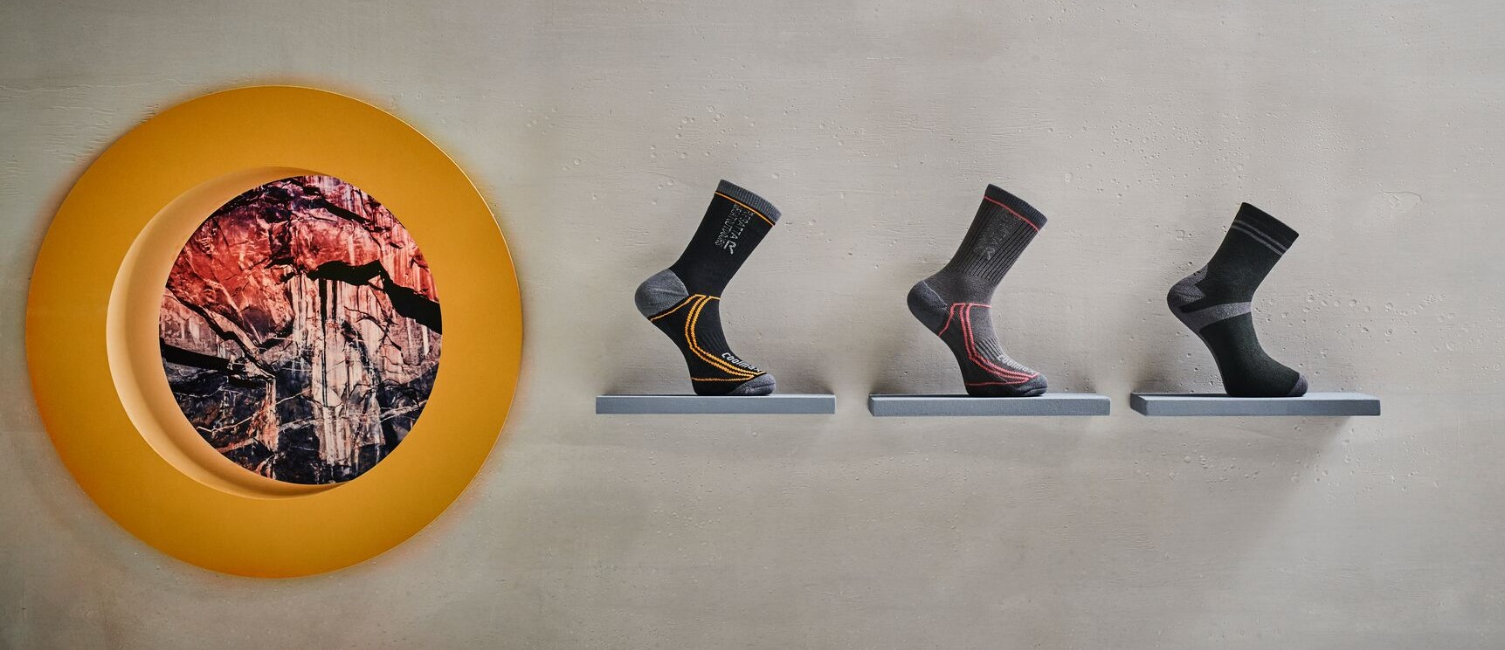The sole purpose of walking socks is to keep your feet as comfortable as possible, but there isn't a definite best pair of walking socks as both the climate and walking conditions change all year round. Summer walking socks for instance, (which are designed to be lightweight) won't be as effective in the colder months where you'll want more insulation, so you'll have to pick up a few different pairs to see you through each climate.
Benefits of Walking Socks
At a glance, walking socks have plenty of benefits to justify using them over normal socks:
- High levels of underfoot protection and comfort.
- Reinforced instep protection and ribbed ankle cuffs help prevent rubbing.
- Airflow channels underfoot allow for extra ventilation.
- Effective moisture wicking keeps your feet dry.
- Increased warmth from insulation on winter pairs.
What Makes Walking Socks Different to Regular Socks?
Realistically, there isn't a world of difference between normal socks and hiking socks, the main difference is typically the material they're made from as well as padding. However, the extra details they feature are designed to target all of the pain points experienced by ramblers which makes them the better option for walking. Reinforcement in specific areas such as the toes, tops and heels help reduce rubbing, as these are high friction areas most prone to discomfort and blistering.
Pro Tip: If you usually experience blistering on the top of your feet, try using one of our alternate lacing methods in combination with some hiking socks to help ease the rubbing.
It's not uncommon to see hikers layer two pairs of normal socks, which is another trick used to reduce rubbing. As the friction occurs between the two pairs of socks rather than directly with your skin, it's an effective way to walk for longer periods of time without blistering. Trouble is, two pairs of socks can end up retaining quite a bit of moisture, which means you'll have to make a conscious effort to stop and air out your feet when you feel a build up of sweat. One reliable pair of walking socks will provide you with ample protection as well as convenience.
Types of Walking Socks
Walking socks come in plenty of different materials, including cotton, wool or merino. Socks designed for colder seasons tend to use the latter, as they're much better natural insulators than cotton, whereas socks designed for late spring and summer typically use a cotton / synthetic blend (much like Coolmax products) for more effective wicking as cotton doesn't perform well against moisture on its own.
In terms of style, here at Regatta we offer both classic crew socks as well as ankle socks, both of which fully protect the heel. Crew socks are for our main walking range, whereas our ankle socks are more catered to trail running. Our trail running socks use a higher blend of Coolmax synthetic fibres in order to offer enhanced moisture wicking built up by running.
Finding the Right Size
To get the right fit, your hiking socks should hug your ankles without any slippage or looseness in order to benefit from the extra cushioning. They also shouldn't be too tight for you either, as this can disturb blood circulation and cause unnecessary swelling, increasing the likeness of discomfort when walking. Avoiding tight fitting socks is fairly straightforward: don't buy a pair under your shoe size and try to avoid tighter stretch-relying 'one size fits all' type socks as the fabric will be squeezed directly to your skin, which won't end well after prolonged sessions of use.
We hope you found our guide on how to choose the best walking socks useful. If you'd like to learn more about Regatta outdoor footwear, have a read of some of our other guides, including:

